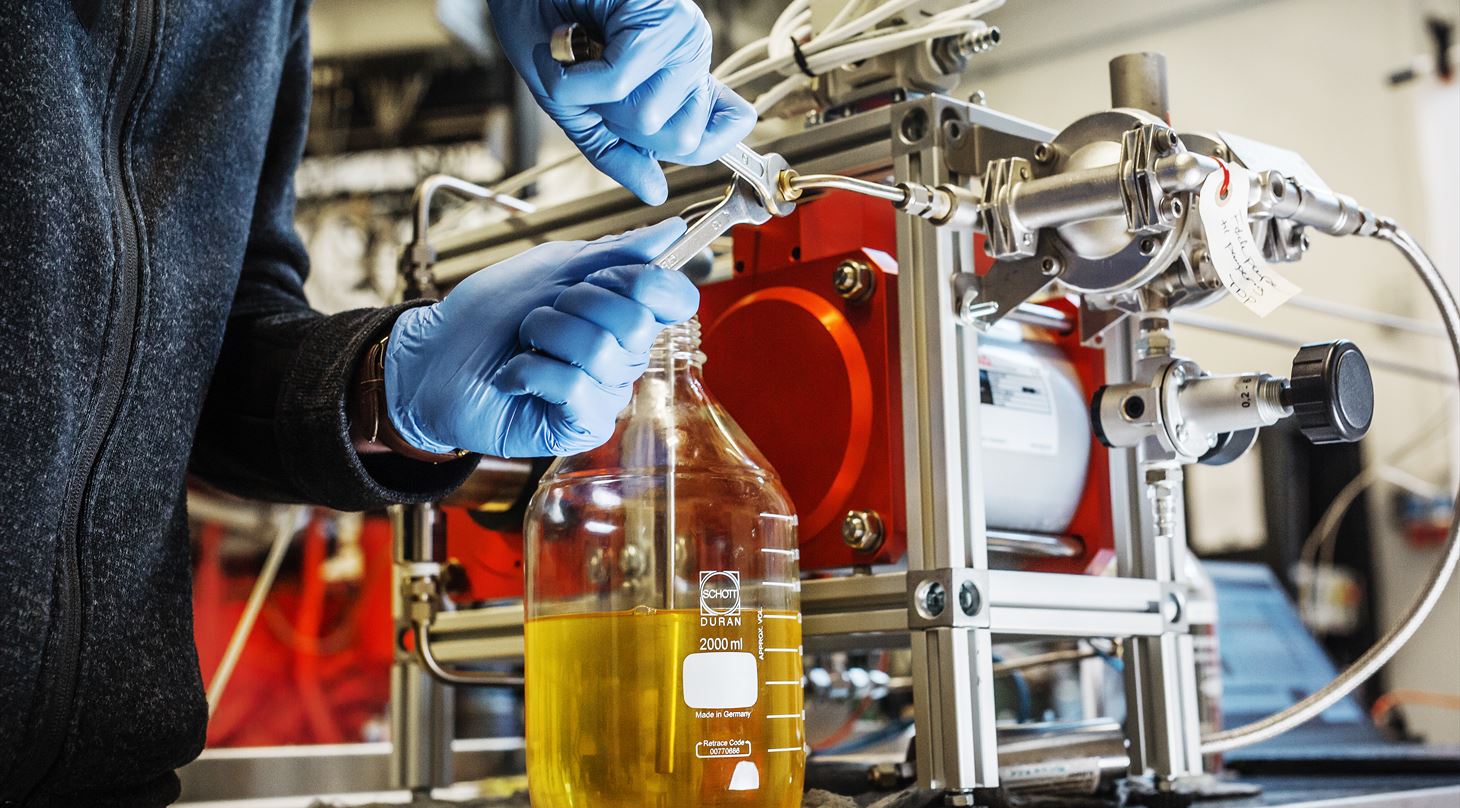
AFLOAT - Ammonia Fuelled Combustion for Marine Applications - Milestones & Results
Select Page
First milestone: System design and risk assessment
System design and risk assessment have been carried out to ensure stable and reliable operating conditions for the system. The work is particularly targeted at the upcoming tests at the Alfa Laval Aalborg Test and Training Center, but is also intended to build a knowledge base that can be leveraged if the technology achieves commercial application in the global fleet.
New catalyst delivers efficient hydrogen production from ammonia - even at low temperature
Within AFLOAT, an entirely new cobalt-based catalyst, enriched with barium, has been developed for ammonia splitting. Notably, this catalyst delivers a high hydrogen yield even at lower temperatures (e.g., 450°C), making the cracking process both easier and less energy-intensive. The catalyst matches the effectiveness of some of the most expensive catalysts on the market, which are typically made from rare metals such as ruthenium.
Read more in Energy & Environmental Science
The catalyst remains active even in the presence of water
In practice, ammonia often contains small amounts of water, which usually hampers catalyst performance. DTU has tested the new cobalt-based catalyst under these conditions and found that it remains highly active - unlike most conventional catalysts, which experience significant performance drops. This water tolerance is a major advantage for practical hydrogen production, as it requires fewer purification steps, reduces costs, and lowers system complexity. The results demonstrate that the catalyst is not only effective, but also robust and ready for application in real-world systems.
Read more in ACS Energy Letters
1 kW-scale cracker technology delivers promising results
The AFLOAT project has successfully tested first-generation ammonia crackers at the 1 kW scale using established technology supplied by Alfa Laval and modified in collaboration with DTI. These units utilize commercially available ruthenium-based catalysts to split ammonia into hydrogen and nitrogen at high temperatures. Test results show high conversion efficiency with up to 97% ammonia conversion under laboratory conditions. The prototype has been systematically evaluated across various operating parameters to optimize performance and establish benchmark data for further development.
This successful 1 kW-scale test represents a significant milestone, providing valuable operational experience and benchmark data. The results achieved with conventional ruthenium catalysts will serve as a reference for evaluating expected improvements from the project’s innovative cobalt-based catalyst in next-generation designs.
The synergy between Alfa Laval’s industrial expertise and DTI’s technical modifications of established solutions has been crucial to achieving these promising outcomes, laying a strong foundation for integrating the new catalyst technology developed by DTU Physics.
Promising results for stable and clean ammonia combustion
Our engine tests have shown that ammonia - when blended with a small amount of hydrogen and only a minor quantity of pilot fuel - can be used effectively in high-speed engines. We can achieve stable combustion across a broad load range and with high efficiency. The tests document that low emissions of both NOx, ammonia, and nitrous oxide (N₂O) are best achieved when combustion occurs close to the stoichiometric range. This provides a strong foundation for effective aftertreatment and demonstrates that the technology can be a viable green alternative to diesel operation.